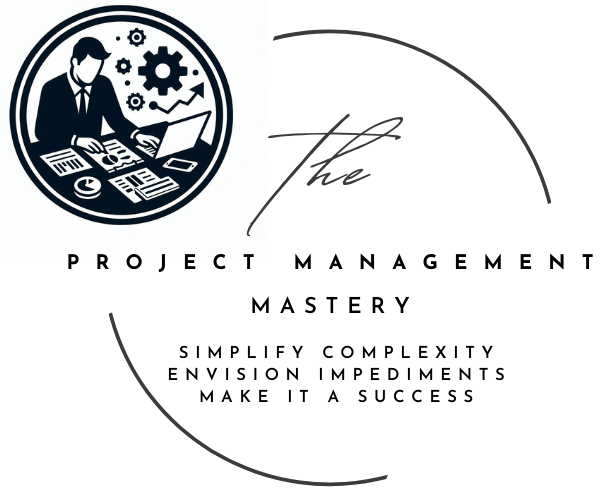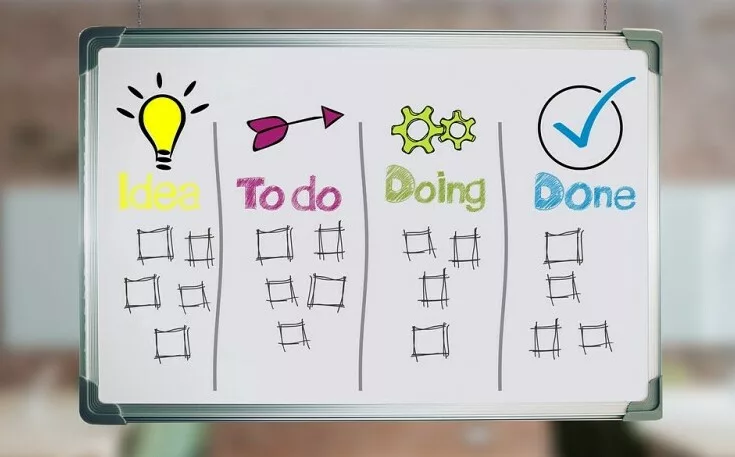
Time has a unique relationship with all aspects of our lives. In project management, this connection is even more explicit. Imagine a scenario where a team works tirelessly to meet a project deadline. Despite their best efforts, they miss the mark. Why? Because time wasn’t wielded as a strategic resource.
Envision time as the foundation upon which project milestones are constructed. If the foundation is poorly laid out, the resulting structure may be weak and collapse. A project that should take a few months might drag on for a year, or a project cost ending up double of what was budgeted for. This is why I stress that time, when managed well, is the foundation of project success.
On the other end of the spectrum, a project delivered on time contributes positively not only to the company but also to the personal reputation of both the project manager and the team members involved. I’ve seen this improve trust, customer satisfaction, and lead to more significant opportunities for everyone involved.
To contextualize the seriousness of time management, let’s talk numbers: For large-scale, years-long projects costing billions, the daily finance charges alone might hover around $1 million. Even small-scale projects face significant consequences without good time management, including losing credibility and market position.
So, time isn’t just an abstract concept; it’s the deciding factor between success and costly overruns in projects. I always remind colleagues that managing time properly isn’t a secondary objective—it’s central to project management. Statistics and experience show us that it can move the needle between the success or failure of a project.
Foundation of Time Management: Principles for Project Managers
As a project manager, you appreciate that time management goes beyond merely watching the clock. It involves a strategic approach to using time as a resource for achieving project objectives. At the core, time management helps maximize productivity and ensures that critical milestones are met within the constraints of scheduled deadlines.
When contracts stipulate that ‘time is of the essence,’ this term isn’t just legal jargon. It emphasizes the critical nature of time in fulfilling contractual obligations and on-time delivery. Missed deadlines can lead to liquidated damages, difficult client relationships, and lost opportunities, reinforcing why time management is integral to project success.
Furthermore, linking project scheduling directly to cost effectiveness highlights the potential savings or expenses resulting from the way time is handled. The objective is clear: streamline processes and avoid delays to prevent cost overruns. An effective schedule is one that considers the high time value of money and cash-in, especially in the current economic climate where even minimal delays can lead to substantial financial implications.
Ultimately, managing time efficiently isn’t just about meeting deadlines; it’s about maintaining a competitive edge. In a market where clients demand speedy results, the ability to deliver quality projects on time could be the differentiator between you and your competitors. By acknowledging the nexus of the competing constraints between time, cost, and quality, you set the foundation for project management that triumphs in both performance and client satisfaction.
Techniques to Master Time Management
Project managers are always on the lookout for methods to streamline processes and get the most out of every minute. Well-known time management techniques can be a game-changer in meeting deadlines and driving project success. Integrating these methods with project management tools not only boosts overall productivity but also provides a clear structure for managing time effectively.
Before diving into specific techniques, it’s crucial to understand the full scope of benefits they offer. By enhancing focus and directing efforts where they’re needed most, time management practices can help project teams avoid the pitfalls of wasted effort and misalignment.
It’s not just about working harder, but smarter. When the whole team adopts a mindset that values time, they foster an environment where deadlines are respected, and the project flows more smoothly. Through conscientious planning and application of these techniques, project managers can ensure that their team’s activities align with the project’s goals and timelines, laying the groundwork for consistent success.
Now, transitioning from establishing why time management techniques are indispensable, let’s move to the specifics of implementing one such powerful method: the ‘Getting Things Done’ approach. This system transforms the chaos of managing myriad tasks into a streamlined workflow that’s easy to manage and execute on. It places a heavy emphasis on decluttering the mind to focus on the task at hand, which can significantly enhance individual and team productivity. Ultimately, this can lead to stronger project outcomes and a more satisfied client base.
Implementing the ‘Getting Things Done’ Approach
The ‘Getting Things Done’ (GTD) methodology transforms the overwhelming nature of project tasks into a clear-cut To Do list. What I find effective about GTD is that it aligns with our natural ability to organize and execute tasks around specific contexts instead of depending on our memory alone.
To apply GTD in project management, start by capturing all tasks related to your project. Write them down so they’re out of your head and listed concretely in front of you. Next, clarify these tasks by defining actionable steps and assigning a person in charge with a target date to complete the task. Every task becomes more manageable when broken down into something you or the owner of the action can act on immediately.
Once tasks are clarified, organize them into categories based on context, priority, and the resources required. This categorization is the secret to not getting overwhelmed by the complexity of what lies ahead. As a project manager, my tip is to keep these categories dynamic, adjusting as the project demands evolve.
The ‘next actions’ list within the GTD approach is where real productivity kicks in. It requires you to decide the immediate next step for each task and ensures that no item remains static. Seeing tasks through one step at a time has helped me keep projects on track without feeling overloaded.
Finally, project managers should make a regular practice of reviewing and updating their To Do lists. This habit ensures you’re always aware of the project landscape and ready to shift gears if necessary.
The effectiveness of this GTD approach leads directly into improving another time management skill – prioritizing tasks. Knowing what needs to be done first and ensuring these tasks get the lion’s share of attention and resources is crucial for keeping your project on schedule and within budget.
Prioritization and Visual Management with Kanban and Timeboxing

In managing my time and tasks, I’ve come to rely heavily on two key techniques: prioritization and visual management. Effective prioritization involves sorting through a multitude of tasks and determining which ones will give the most significant returns. The principle behind this is the 80/20 rule, or Pareto Principle, which implies that 80% of outcomes come from 20% of efforts. For project managers, applying this rule can mean identifying the critical 20% of tasks that will contribute towards 80% of the project’s success.
Once the tasks have been prioritized, visualization tools like Kanban become invaluable. Kanban is a method that helps you see the flow of work, enabling better control over the progression of tasks from the backlog through to completion. I implement Kanban by creating a simple board with columns labeled ‘Backlog’, ‘To Do’, ‘In Progress’, and ‘Completed’. This straightforward setup not only clarifies what needs to be done next but also motivates the team as they can physically move tasks along the columns, marking progress. You can use Microsoft Planner tool among others to implement a Kanban board.
Another technique I use along with Kanban is timeboxing. Dividing tasks into finite periods known as ‘timeboxes’, each with a specific deadline, brings a sense of urgency and focus to the team’s work. In agile methodologies, these timeboxes, commonly referred to as ‘iterations’ or ‘sprints’, are at the heart of planning and executing work. By committing to completing certain tasks within each sprint, my team can improve efficiency and predictability, which are essential for timely project delivery.
Time management isn’t about counting every second; it’s about making every second count. So, while I’m strategizing task completion with Kanban and timeboxing, I’m simultaneously setting the stage for the next step: optimizing delegation. Tailoring delegation strategies to the project’s needs is critical, and it’s a subject I’ll delve into next.
Harnessing Time Management for Project Excellence
I’ve walked you through methods to streamline your productivity, from embracing the ‘Getting Things Done’ system to mastering the art of prioritizing tasks effectively. With techniques such as Kanban and Timeboxing, you can visibly track progress and work within deliberate time constraints, propelling your project forward with precision and intent.
As vital as these strategies are, it’s equally crucial to master the skill of delegation. Keep ‘Who’s Got the Monkey’ in mind (a metaphorical concept from a classic Harvard Business Review article titled “Management Time: Who’s Got the Monkey?” by William Oncken Jr. and Donald L. Wass.) to ensure tasks are in responsible hands, allowing you to focus on high-impact activities that truly need your attention. Those would be the important and urgent tasks in the Eisenhower Matrix.
Remember, the goal is not just to complete a project but to ensure the highest standard of quality within the budget and timeline. Each moment counts, and employing these time management techniques is an investment that will yield dividends in both the short and long term.
Finally, take a hard look at your daily habits. Challenge yourself to eliminate time wasters and unnecessary meetings that don’t serve your project’s main objectives. It’s in these small, daily decisions that the true essence of time management is realized.
In conclusion, the thoughtful application of time management techniques can make a monumental difference in the success of your projects. As a project manager, it’s your responsibility to harness these practices, set an example for your team, and drive all your projects to successful and timely completions.

